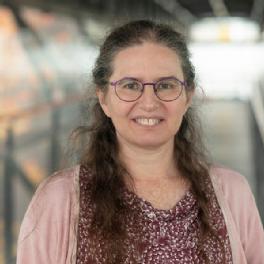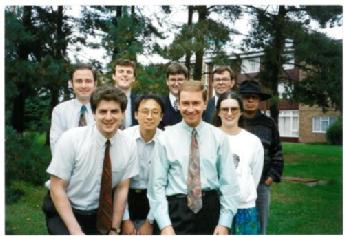Margaret Low - Memories

Margaret speaks about her 32-year career at WMG, and early experiences in the simulation team.
I joined WMG in 1988 as part of the simulation team led by Rajat Roy, although it wasn’t known as WMG at that time, it was the Manufacturing Systems Engineering Group (MSE).
I briefly shared an office on the 4th floor of the School of Engineering, but within a few months moved to join the rest of the simulation team – who were based on the ground floor of Felden House, next to Arden House on the Westwood campus.
At that time WMG staff were also based in Willow Lodge on Westwood and on the first two floors of the ‘now’ Energy Innovation Centre, an additional two floors were in the process of being added.
Technology at the time
Looking back, I realise now that my memories of WMG tend to align with different levels of technology and computers in use at that time.

What was counted as portable computing is very different to what we call portable today. Discrete event simulations in the 1980s required computers with significant resources, and specialist display equipment.
Intecolor computers were used as displays, and these booted from an 8 inch floppy disk (that had a storage capacity of 80kbytes).
Simulations were built using SEE WHY, and in order to explore different scenarios – the actual simulations often ran for 5 or 6 weeks, to simulate the factory running for several months or years, depending on the complexity of the simulation.
The projects at that time were mainly factory simulations for small, medium and large companies, exploring the consequences of breakdowns or other manufacturing problems.
Industry partnerships
The graphical insight the simulations provided were valued by companies who regularly came back for further work. They were important to understanding what was going wrong, why it is happened and an aid to exploring potential solutions before significant investment in equipment was made. Prior to this manufacturing companies relied heavily on the use of static analysis to give indications of capacity and capability, but in a dynamic environment these could be of limited use.
Rajat’s expertise in operations research ensured continuity of employment and over time the team expanded. The team were involved in every aspect of WMG activity, ranging from industry and research projects, MSc + PhD supervision, industrial projects, teaching on industrial programmes - part time and full time UG and PGT programmes, teaching company programmes (which later became Knowledge Transfer Partnerships).
The simulation team was based in Felden House, next to Arden House, where Professor Bhattacharyya took visitors for lunch, so we were often on call for demonstrations giving pre or post lunch tours.
The simulation team's expansion
During the 1990s the simulation team and the range of projects continued to grow. We gained more powerful computers and servers and became more inventive in naming them. The computers included Sid, Biffa, Billy, and the main server was called Viz.
The Intecolors were traded in when a computer manufacturer offered a large discount, swapping old computers for their latest machines. The person that came to collect the Intecolors was a little disappointed when only one could be fitted into the van, and had to come back with a bigger van to collect the remaining three Intecolors.
Using data
Simulations often required a large amount of data in order to give a realistic insight into a problem area. The team regularly had to extract data from company based systems, import it into the simulation, and then post-process the data that came out of the simulation.
This led naturally into the development and implementation of application systems using databases, moving companies from a file based application, into systems that used relational databases.
Relational databases brought significant advantages to companies, in terms of data accessibility, giving them a better insight into their processes, and when combined with the power of visual simulation, providing a real insight into company processes and performance.
There have been significant changes in technology available to, and in regular use by industry. Its been an interesting journey following those changes, and to be part of that journey within WMG.
